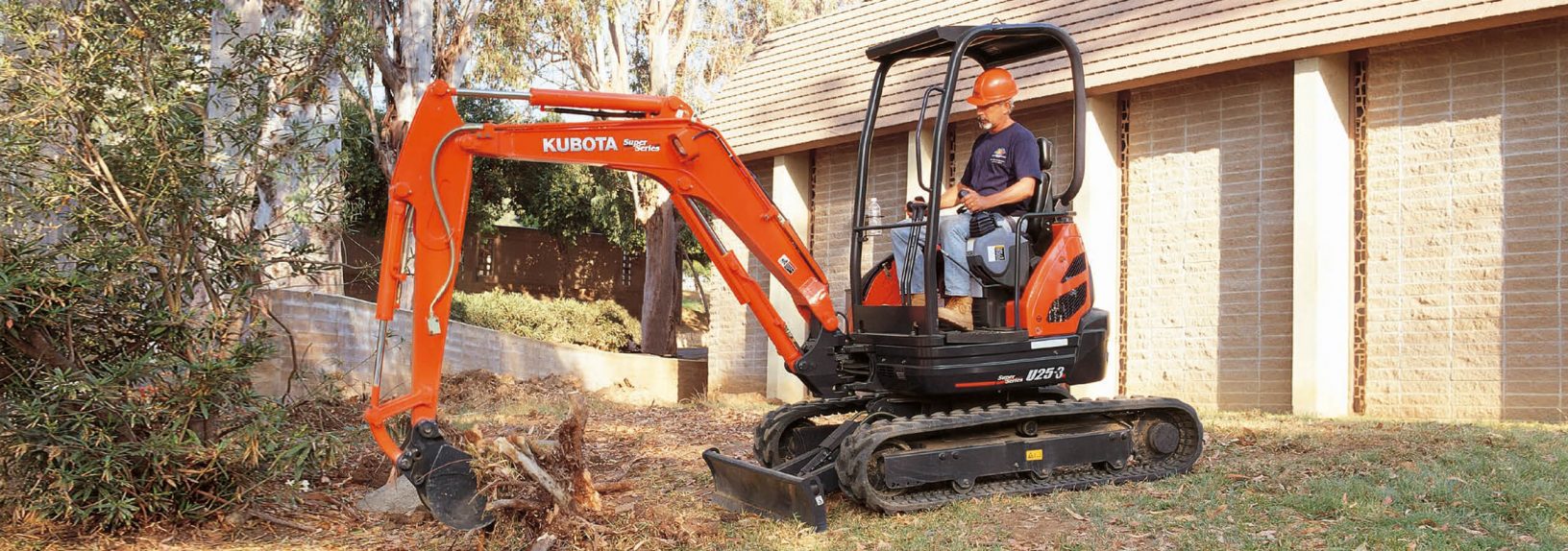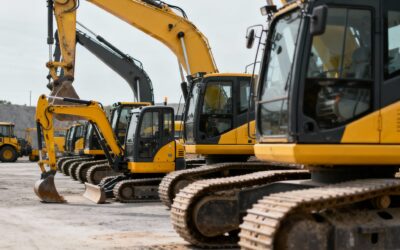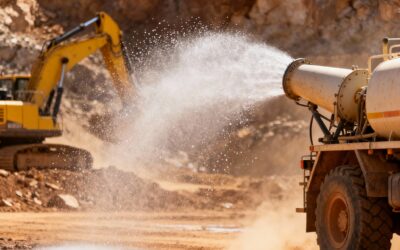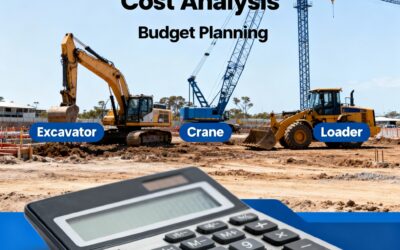Understanding the Importance of Choosing the Right Equipment
Why Equipment Selection Matters
Choosing the right equipment is critical to the success of any project. Effective equipment selection not only enhances productivity but also ensures safety and lowers overall costs. It’s like using the perfect tool for a job—having the right machinery, such as skid steer rentals or excavators, can make a world of difference.
- Efficiency: Using the right equipment enhances efficiency, allowing projects to be completed on time.
- Cost Savings: Proper equipment reduces repair and operational costs.
Impact of Incorrect Equipment Choices
On the flip side, inappropriate equipment can derail a project’s success. For example, selecting a compact excavator for a large site could lead to inefficiencies and increased labor costs. The consequences of incorrect choices may include:
- Delays: Projects could extend beyond deadlines.
- Increased Expenses: Unanticipated repairs and operational costs can escalate.
- Safety Risks: Mismatched equipment might pose hazards to workers.
In essence, careful selection of construction equipment rentals can be the difference between triumph and tribulation on your project.
Assessing Your Project Needs
Identifying Project Requirements
As a pivotal step following equipment selection, assessing your project needs is essential. Each project has unique requirements, be it size, scope, or specific tasks. Taking time to identify these needs upfront can help streamline operations and avoid costly mistakes. Start by asking yourself:
- What is the project scale?
- What tasks need to be accomplished?
- What are the timeline constraints?
These questions will guide you in selecting the appropriate machinery, whether it be for construction equipment rentals or specific excavator hire.
Determining Equipment Specifications
Once project requirements are clear, it’s time to determine the necessary specifications for your equipment. Proper specifications ensure that the machinery matches your project’s demands. For instance, if you require minimal maneuverability on a tight job site, a compact skid steer may be ideal.
Consider these factors:
- Power Requirements: Does your project require heavy lifting?
- Size and Weight: Will equipment fit through narrow spaces?
- Special Features: Do you need attachments like buckets or forks?
By meticulously evaluating project needs and equipment specifications, stakeholders can select construction equipment rentals that align perfectly with their goals. A thoughtful approach here translates to successful project outcomes.
Researching Equipment Options
Types of Equipment Available
Once project needs and specifications are defined, the next step in ensuring a successful project is researching the types of equipment available. The construction industry offers a broad array of options—from heavy machinery to specialized tools. Here are some common types to consider:
- Excavators: Ideal for digging and demolition tasks.
- Skid Steers: Versatile for lifting and moving materials in tight spaces.
- Bulldozers: Effective for grading and clearing ground.
- Cranes: Essential for lifting heavy loads to great heights.
Each type caters to different project requirements and capabilities, making it vital to align your choice with your project’s unique needs.
Factors to Consider When Evaluating Equipment
Evaluating equipment goes beyond just selecting the right category; it requires a thorough examination of various factors to ensure optimal functionality. Here are some essential considerations:
- Maintenance History: A well-maintained machine reduces downtime.
- Fuel Efficiency: Operating costs can significantly affect your budget.
- Availability of Attachments: Compatibility with attachments can enhance versatility.
- Rental Terms: Understanding the terms of construction equipment rentals can lead to better deals.
By carefully researching available options and considering these factors, project managers can make informed decisions that lead to successful outcomes. A little diligence now can prevent extra headaches later on!
Setting a Budget and Timeline
Establishing a Budget
With the equipment options researched and evaluated, it’s crucial to set a clear budget to guide your project. Budgeting helps prevent overspending and ensures you allocate resources efficiently. Begin by considering these factors:
- Equipment Costs: Include rental fees for skid steer rentals or excavator hire.
- Operational Costs: Incorporate fuel, insurance, and maintenance expenses.
- Labor Expenses: Don’t forget wages for operators and other personnel.
- Contingency Funds: Set aside at least 10-15% for unexpected costs.
Creating a detailed budget provides a financial framework that keeps projects on track.
Creating a Project Timeline
Alongside budgeting, developing a realistic project timeline is crucial for timely completion. Establishing deadlines fosters accountability and helps manage expectations. Here’s how to map out your timeline:
- Break Down the Project: Divide work into phases (e.g., site preparation, equipment installation, operation).
- Assign Timeframes: Estimate realistic durations for each phase based on past experiences.
- Include Buffer Time: Allow extra time for unforeseen delays.
Incorporating a clear budget and a well-structured timeline not only enhances clarity but also improves overall project management. Effective planning ensures that both financial and temporal commitments are met harmoniously, aligning resources for successful project execution.
Seeking Professional Advice
Consulting Experts in the Field
As the project progresses, seeking professional advice can provide valuable insights. Consulting industry experts can clarify doubts and suggest the best practices for equipment selection and project management. Building relationships with professionals, such as rental company representatives or experienced operators, can lead to better decisions. Consider the following when reaching out:
- Experience Level: Look for professionals with a proven track record in your project type.
- Specialization: Different projects require varied expertise—ensure the consultant specializes in areas relevant to your needs.
- References: Ask for feedback from others who have utilized their services.
Utilizing expert knowledge can save time, reduce costs, and enhance project outcomes.
Obtaining Recommendations from Professionals
In addition to consulting experts, obtaining recommendations from construction professionals can steer you toward the best equipment and practices. Personal experiences often shed light on what works best in real-world applications. When requesting recommendations, keep these points in mind:
- Network Connections: Reach out to contractors or construction managers within your professional network.
- Online Reviews: Research feedback on specific equipment from trusted sources.
- Local Insights: Seek advice about construction equipment rentals near you to find reliable providers.
By actively pursuing expert advice and recommendations, project managers can make informed choices that lead to efficient and successful project execution. Expert input not only adds credibility to decisions but also helps mitigate risks.
Testing and Trialing Equipment
Importance of Testing Equipment
After consulting with experts and gathering recommendations, the next logical step is testing the equipment. Testing is crucial because it ensures that the machinery meets the project’s specific requirements and performs reliably on site. Consider the following benefits of testing:
- Performance Verification: Confirm that the equipment operates efficiently under real conditions.
- Safety Assurance: Ensure that all safety features function correctly to protect workers on site.
- Cost Efficiency: Identifying issues before purchasing or renting can save on costly repairs or replacements.
Taking the time to test equipment minimizes risks and maximizes project success.
Conducting Equipment Trials
Conducting trials of the selected equipment is vital to making informed decisions. Many rental companies offer trial periods where you can assess functionality in real-time. Here’s how to conduct effective equipment trials:
- Test in Real Conditions: Utilize the equipment on-site with actual materials and tasks.
- Gather Feedback: Include input from operators regarding ease of use and performance.
- Document Performance: Track metrics like fuel consumption, speed, and output to determine efficiency.
By thoroughly testing and trialing equipment before making a final decision, project managers can confidently select the best machinery for their needs. This step enhances overall project reliability and operational success, ensuring that the right tools are in place for effective execution.
Making the Final Decision
Weighing Pros and Cons
With all the information gathered through testing and consultations, it’s time to make the final decision. Weighing the pros and cons of each equipment option is vital in ensuring the best fit for your project. Here are some tips to help in this assessment:
- List Strengths and Weaknesses: For each piece of equipment, outline its advantages and potential drawbacks.
- Consider Long-term vs. Short-term: Determine if the equipment is a good investment for ongoing projects or just a short-term need.
- Evaluate User Feedback: Use insights from trials and recommendations to inform your decision.
This systematic evaluation can clarify which machinery aligns best with project goals.
Finalizing Your Equipment Choice
Once the pros and cons have been carefully weighed, it’s time to make the final choice. This decision should align with both the project requirements and budgetary constraints. Here’s how to finalize effectively:
- Confirm Availability: Ensure the chosen equipment is available for your required rental dates.
- Negotiate Rental Terms: Don’t hesitate to discuss better rates or packages with the rental company.
- Prepare for Implementation: Outline a plan for delivery, installation, and integration into your workflow.
By methodically deciding on equipment and ensuring that every angle is considered, project managers set the stage for successful execution. This thoughtful approach to finalizing equipment choices not only fosters confidence but also promotes overall project efficiency and effectiveness.
Purchasing and Implementing Equipment
Ordering Equipment
With the final equipment choices made, it’s time to dive into the ordering process. This stage is crucial, as the right orders set the foundation for a smooth implementation. Here’s how to streamline the ordering process:
- Finalize Specifications: Double-check specifications to avoid errors. Are you ordering the correct size and model?
- Place Orders Promptly: To ensure timely delivery, place your orders as soon as possible.
- Review Contracts: Carefully review all rental agreements or purchase contracts to confirm terms regarding maintenance, insurance, and returns.
A well-organized ordering process can save both time and money, setting you on the path to success.
Installing and Integrating Equipment
Once the equipment has arrived, the next challenge is installation and integration into your existing workflow. Effective integration ensures the machinery operates harmoniously with ongoing project activities. Here’s how to tackle this phase:
- Follow Manufacturer Guidelines: Adhere to provided installation manuals to ensure proper setup.
- Involve Operators Early: Allow operators familiar with the equipment to participate in the installation process; their insights can be invaluable.
- Test Run: Conduct a test run to verify that everything is functioning as expected before full-scale use.
By focusing on proper ordering and seamless integration, project managers can ensure that the equipment is ready and optimized for use. This diligence not only facilitates successful project execution but also creates a safer, more efficient working environment.
Evaluating Performance and Adjusting as Needed
Monitoring Equipment Performance
After the equipment has been installed and integrated into your operations, the next critical step is monitoring its performance. Regular evaluation helps ensure that the equipment functions optimally and efficiently. Here are key aspects to focus on:
- Track Operational Metrics: Monitor fuel consumption, output rates, and operating hours.
- Solicit Operator Feedback: Gather insights from users to identify any challenges or inefficiencies they encounter.
- Conduct Regular Inspections: Schedule routine maintenance checks to catch potential problems early.
By keeping a close eye on performance, project managers can swiftly address issues before they escalate.
Making Adjustments for Optimal Results
Once performance metrics are collected, it’s time to make necessary adjustments to optimize results. Adaptability can significantly enhance project outcomes. Here’s how to effectively adjust operations:
- Analyze Data Trends: Use performance data to identify patterns or recurring issues.
- Train Staff: Offer additional training for operators if specific gaps in knowledge or skills are identified.
- Schedule Maintenance: If certain equipment shows signs of wear, plan for repairs or adjustments based on utilization.
By consistently evaluating performance and making timely adjustments, project Managers can enhance the equipment’s efficiency, ultimately leading to project success. This proactive approach ensures that operations remain smooth and effective, reinforcing the project’s overall productivity and profitability.
Conclusion and Recap
Summary of Key Considerations
As we wrap up this discussion on equipment selection and implementation, it’s essential to reflect on the key considerations that can influence success. Here’s a quick recap:
- Understand Project Needs: Define what equipment is necessary based on specific tasks.
- Research Options: Explore various types of equipment and their pros and cons.
- Budget Wisely: Establish a budget that covers all potential costs.
- Test Equipment: Ensure machinery meets performance standards through trials.
Recognizing these aspects is crucial for a streamlined project journey.
Final Tips for Successful Equipment Selection
In the spirit of ensuring your project’s success, here are some final tips to consider:
- Engage Experts: Don’t hesitate to consult industry professionals for advice and recommendations.
- Be Flexible: Stay open to making adjustments based on performance data and feedback.
- Plan for Maintenance: Regular maintenance is key to prolonging equipment life and ensuring efficiency.
By remembering these core principles and tips, project managers can confidently navigate the complexities of equipment selection and implementation. This diligence not only saves time and resources but also promotes a more efficient and productive project overall.






